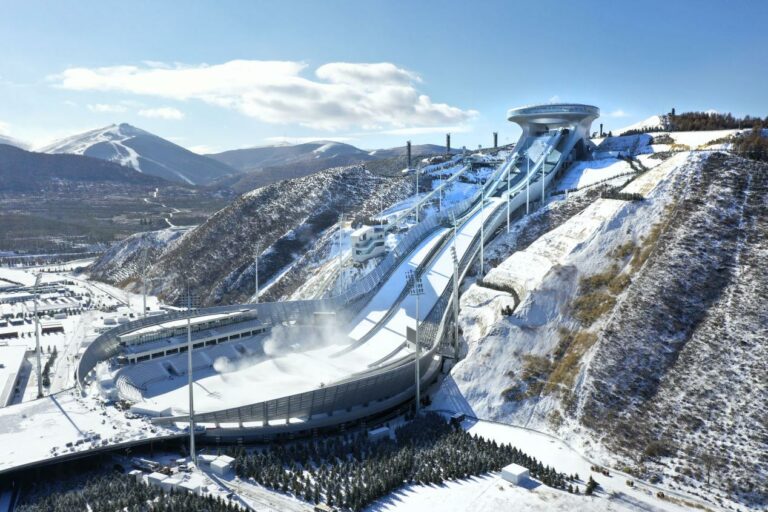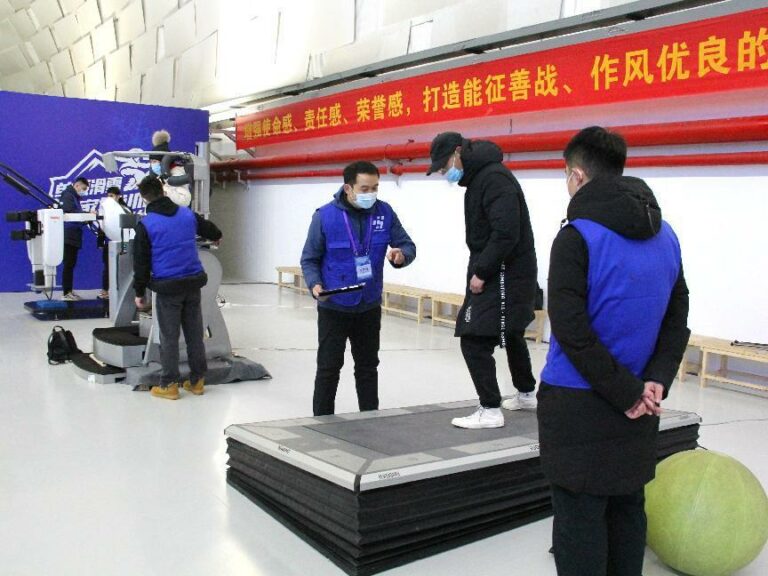
By Liao Dan
As the Beijing 2022 Olympic Winter Games kicked off, people have paid greater attention to culture related to winter sports. Ice and snow culture in China dates back a long time ago. Inheritance of and innovation in ice and snow culture in China crystalize the wisdom of harmonious relationship between human society and nature and embody the practical experience of the Chinese nation in understanding and utilizing nature.
Petroglyph of skiers found in a cave in Altay city, the northern edge of Junggar Basin, northwest China’s Xinjiang Uygur autonomous region, is so far one of the earliest records of humankind’s skiing activities.
Skiing, as a means of transport for human beings in snowy mountains in winter, has a history of at least 10,000 years, as the petroglyph suggested.
To survive the cold winter, ancient Chinese people of various ethnic groups in northern China gradually turned ice and snow to their own advantage. For example, the ancients’ innovations for illumination in winter have evolved into today’s ice lanterns that people like watching so much.
To strengthen the defense, ancient Chinese people could build ramparts overnight by turning water into ice and then mixing it with earth. Moreover, they invented sleds so as to move faster when hunting in winter, and made use of ice and snow to store food to guarantee sufficient food supply in cold months. The tradition of food storage in winter has been followed to this day.
As people’s needs for survival in winter were satisfied, ice and snow sports and art, which were oriented to recreation and relaxation, started to emerge.
According to historical records, skating was a verified ancient ice and snow recreational activity. During the reign of Emperor Qianlong (1736 – 1796) of the Qing dynasty, ice and snow sports became quite popular, and a series of activities on ice, including skating, ice skate archery, and rolling on ice, took shape, which involved early forms of skates and sleds.
In modern times, Chinese people began to add different colors to the colorless ice and white snow by developing environment-friendly pigments, and decorating urban areas in northern China with ice lanterns and ice and snow sculptures, expanding ice and snow application scenarios.
The first Harbin Ice Lantern Garden Party was held in Harbin city, northeast China’s Heilongjiang province, in 1963, effectively fueled the emergence of ice and snow art in various regions across China.
In Shenzhen, south China’s Guangdong province, people have built low-temperature winter sports venues with air domes, where the all-white structures and snowmakers and other facilities inside simulate realistic indoor ice and snow sports fields. Wenzhou City, east China’s Zhejiang province, has established scenario-based indoor ski centers and ice and snow theme parks, breaking the geography and season limits of ice and snow sports and culture.
The designs of venues for the 2022 Olympic Winter Games represent the creative transformation of ice and snow elements. The National Ski Jumping Center in Zhangjiakou city, north China’s Hebei province, one of the venues, features an S-shaped curve which resembles a jade Ruyi scepter, a Chinese talisman. The design is expected to convey good wishes.
In the digital era, virtual reality (VR), digital twin, virtual studio, and other technologies are widely adopted in the culture sector, allowing ice and snow culture to further break the restrictions of season and transformation and be inherited in new ways.
With the help of a 360-degree camera that captures panoramic images of ice and snow and a VR helmet equipped with a locator and supporting different angles, users can experience the fun of being in a world of ice and snow.

Injury-free ski training, which features the combination of VR headsets and indoor ski training equipment, has benefited an increasing number of winter sports enthusiasts.
The ongoing Beijing 2022 Olympic Winter Games have employed digital technologies for broadcasting, which effectively enrich the experience of the audience.
One of the new explorations in the innovative development of ice and snow culture in reproducing ice and snow figures in ancient artworks or creating virtual ice and snow figures via digital technologies.
Thanks to the digital transformation of an ancient painting depicting a grand skating event over 200 years ago, more than 1,000 figures in the painting seem to have been brought back to life and a large-scale on-ice competition in ancient times has been vividly reproduced.

An online video introduced by China Mobile, which is based on the story of Chinese freestyle skier Gu Ailing, has successfully created the image of a virtual winter sports athlete.
In its integration with digital technologies, ice and snow culture has embraced further development and transformation, during which people’s experiences of the culture have also been constantly enriched.










